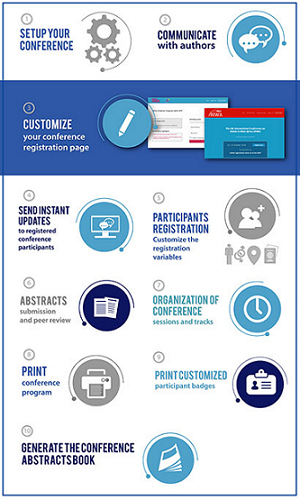Acute flaccid paralysis (AFP) surveillance system in Lebanon: a teaching case-study
Hala Abou Naja, Nada Ghosn
Corresponding author: Hala Abou Naja, Epidemiological Surveillance Program at the Lebanese Ministry of Public Health, Lebanon 
Received: 02 Jul 2020 - Accepted: 20 Jul 2020 - Published: 04 Aug 2020
Domain: Infectious diseases epidemiology
Keywords: Acute Flaccid Paralysis, polio, surveillance, virus importation, polio preparedness plan
This article is published as part of the supplement Teaching case-studies in Field Epidemiology with a focus on the Eastern Mediterranean Region, commissioned by The Eastern Mediterranean Public Health Network (EMPHNET).
©Hala Abou Naja et al. Pan African Medical Journal (ISSN: 1937-8688). This is an Open Access article distributed under the terms of the Creative Commons Attribution International 4.0 License (https://creativecommons.org/licenses/by/4.0/), which permits unrestricted use, distribution, and reproduction in any medium, provided the original work is properly cited.
Cite this article: Hala Abou Naja et al. Acute flaccid paralysis (AFP) surveillance system in Lebanon: a teaching case-study. Pan African Medical Journal. 2020;36(1):7. [doi: 10.11604/pamj.supp.2020.36.1.24759]
Available online at: https://www.panafrican-med-journal.com/content/series/36/1/7/full
Acute flaccid paralysis (AFP) surveillance system in Lebanon: a teaching case-study
Hala Abou Naja1,&, Nada Ghosn1
&Corresponding author
Lebanon has been declared polio-free since 2002. In 2003, following an imported polio case, national campaigns succeeded to contain the virus with no further cases. Since 2013, the risk of poliovirus importation became concrete. Several risk factors linked to the Syrian crisis were illustrated including wild poliovirus type 1 outbreak in Syria in 2013-2014, huge Syrian population influx into Lebanon due to insecurity, and circulating vaccine-derived poliovirus type 2 (cVDPV2) outbreak in Syria in 2017. Hence, there is continuous need to enhance Acute Flaccid Paralysis (AFP) surveillance to timely detect any imported poliovirus for the implementation of needed response. The goal of the case study is to build the capacity of Field Epidemiology Training Program (FETP) residents and other health professionals in the area of AFP reporting and prepare health care staff to any polio importation into the country. This case study is can be administered in 2-3 hours.
General instructions: this case study should be used as adjunct training material for novice epidemiology trainees to reinforce the concepts taught in prior lectures. The case study is ideally taught by a facilitator in groups of about 20 participants. Participants are to take turns reading the case study, usually a paragraph per student. The facilitator guides the discussion on possible responses to questions. The facilitator may make use of flip charts to illustrate certain points. Additional instructor´s notes for facilitation are coupled with each question in the instructor´s guide to aid facilitation.
Audience: this case study was developed for health care staff at hospital setting. These participants are commonly health care workers working in the county departments of health whose background may be as medical doctors, nurses, environmental health officers or laboratory scientists who work in public health-related fields and infection control personnel.
Prerequisites: before using this case study, participants should have received lectures on disease surveillance (polio/AFP surveillance).
Materials needed: Flash drive, flip charts, markers, computers with MS Excel.
Level of training and associated public health activity: Novice - Enhancing surveillance
Time required: 2-3 hours
Language: English
- Download the case study student guide
- Request the case study facilitator guide
The authors declare no competing interests.
We wish to acknowledge the Eastern Mediterranean Public Health Network (EMPHNET) for their support to develop this case study. I wish to acknowledge as well Mrs. Zeina Farah for peer-reviewing this case study.
- Epidemiology Surveillance Program. AFP guideline_Lebanon. Accessed on 7 June 2020.
- Republic of Lebanon, Ministry of Public Health. Guideline for Communicable Diseases Surveillance SystemAccessed June 7, 2020.
- Aylward RB, Alwan A. Polio in Syria. The Lancet. 2014 Feb 8;383(9916):489-91. PubMed | Google Scholar
- Inter-Agency Regional Response - Syrian Refugees. Accessed on 6 June 2020.
- GPEI. One Year Since the Last Case of Polio In Syria. Accessed on 6 June 2020.
- Ramirez Gonzalez A, Farrell M, Menning L et al. Implementing the Synchronized Global Switch from Trivalent to Bivalent Oral Polio Vaccines-Lessons Learned From the Global Perspective. J Infect Dis. 2017 Jul 1;216(suppl_1):S183-S192. PubMed | Google Scholar
- GPEI. OPV Cessation. Accessed on 7 June 2020.
- WHO - EMRO. Situation reports on the polio outbreak in Syria | Syria-infocus | Syrian Arab Republic. Accessed on 7 June 2020.
- Mbaeyi C. Strategic Response to an Outbreak of Circulating Vaccine-Derived Poliovirus Type 2 - Syria, 2017-2018. MMWR Morb Mortal Wkly Rep. 2018 Jun 22;67(24):690-694. PubMed | Google Scholar
- WHO - EMRO. Polio outbreak in Syria successfully stopped | Syria-news | Syrian Arab Republic. Accessed on 7 June 2020.
- GPEI. Outbreak Preparedness & Response. Accessed on 7 June 2020.
- Operational Portal. Situation Syria Regional Refugee Response. Accessed on 7 June 2020.
Search
This article authors
On Pubmed
On Google Scholar
Citation [Download]
Navigate this article
Similar articles in
Key words
This supplement
- Investigation of a haemorrhagic disease with unknown origin in Kyrandia, 2005: a teaching case-study (Accessed 343 times)
- A novel coronavirus outbreak: a teaching case-study (Accessed 264 times)
- Infection prevention and control for the MERS-COV, 2019: a teaching case-study student´s guide (Accessed 252 times)
- Investigation of diphtheria outbreak in Al-Sunta locality in South Darfur State - Sudan, 2019/2020: a teaching case-study (Accessed 250 times)
- Investigation and control of measles outbreak in Puli-Khumri and Baghlan-Markazi Districts, Baghlan province, Afghanistan: a teaching case-study (Accessed 220 times)
- Real-time surveillance of infectious diseases and other health conditions during the arbaeenia mass gathering, Kerbala, Iraq, 2016: a teaching case-study (Accessed 212 times)
- Risk factors of stillbirths: a teaching case-study (Accessed 208 times)
- A large-scale outbreak of botulism associated with a traditional celebratory Egyptian fish dish in five governorates - Lower Egypt, 2019: a teaching case-study (Accessed 207 times)
- An outbreak of multi-drug-resistant tuberculosis cases amongst the same family living in a rural area in Morocco, July-2017: a teaching case-study (Accessed 191 times)
- Outbreak of cholera in Iraq during a humanitarian crisis, 2015: a teaching case-study (Accessed 189 times)










